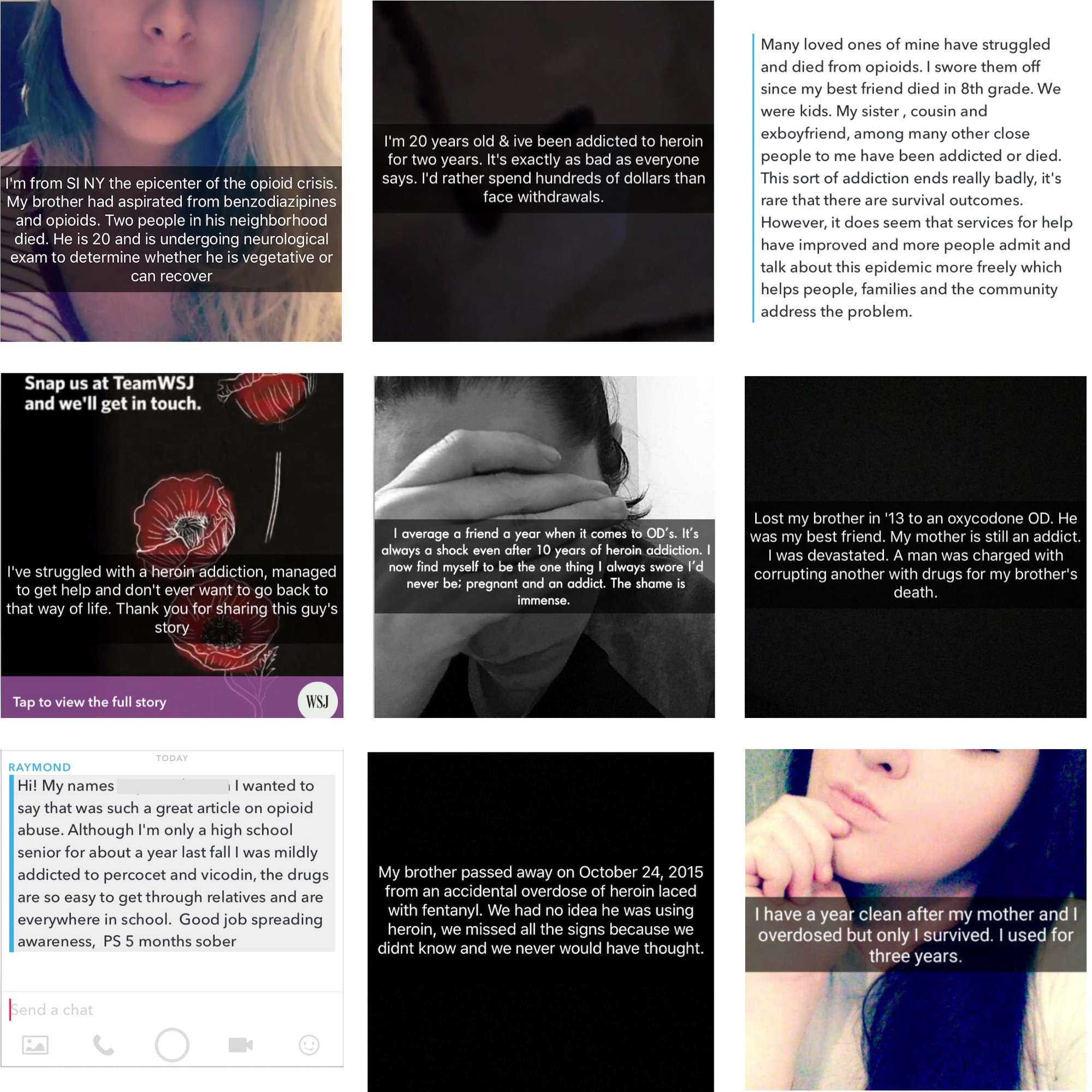Readers from every age and background have been touched by the the opioid crisis sweeping the U.S., but the victims of that crisis are overwhelmingly from one demographic: young people. As The Wall Street Journal sought to bring its crucial public-service reporting on the epidemic to those most impacted by it, we turned to our Snapchat Discover channel — where most of our readers are between 14 and 35 — as a means not only of telling these stories, but sourcing them as well.
The Callout
In December 2016, we focused weekly Snapchat editions on different elements of the crisis, and asked the community to participate. The series began with an overview of the crisis, (based on this leder), and a callout: “Have you lost someone you love to opioids, or struggled with your own addiction?” It invited readers to get in touch.
Nearly 400 young readers responded with notes, photos and videos in which they shared intimate looks into their lives, their fears, addictions, and heartaches. Nearly a quarter of the respondents filled out a lengthy survey in order for a reporter to contact them. And we did.
Deep Reporting
Their stories became central to our reporting. After an investigative edition that tracked the path of fentanyl from China to small-town USA and explained how the drug was permeating communities, we dove into telling our readers’ stories.
An edition that told first-person stories of addiction reported from our callout became our longest-viewed edition ever to run on Snapchat, with an average viewing time of around five minutes.
Read the full accounts right here.
Dozens of readers took to Snapchat, Twitter and Facebook to talk about how the frank accounts stirred them and brought the crisis closer to home.
Responses from our community also helped us chronicle the lives and deaths of opioid users in an edition that accompanied a large interactive that ran on WSJ.com. The edition put individual faces to the tragedy, and, more importantly, brought our readers’ stories out into the community.
Snapchat Documentary
The series culminated with The Wall Street Journal’s first-ever Snapchat documentary. The subject of the doc, a young mother named Daphne who had lost her fiancé the year before to an overdose, responded to our callout in the first edition. We wanted to tell her story in a way that spoke to an audience of her peers, to make it feel personal.
We shot the piece vertically, and formatted it to look like a series of snaps you might get from a friend — not a major news outlet. The story was formatted so that readers could watch it just as the series of 10-second “top snaps” to get the whole story, or swipe up in places to watch longer videos that really dig into emotional moments.
The response was overwhelming. People responded on Snapchat, through email, and other forms of social media. “I was sitting on the couch next to my mom, just messing around on my phone when I found your story,” one reader told us. “By the end she had started watching with me and both of us were in tears.”


